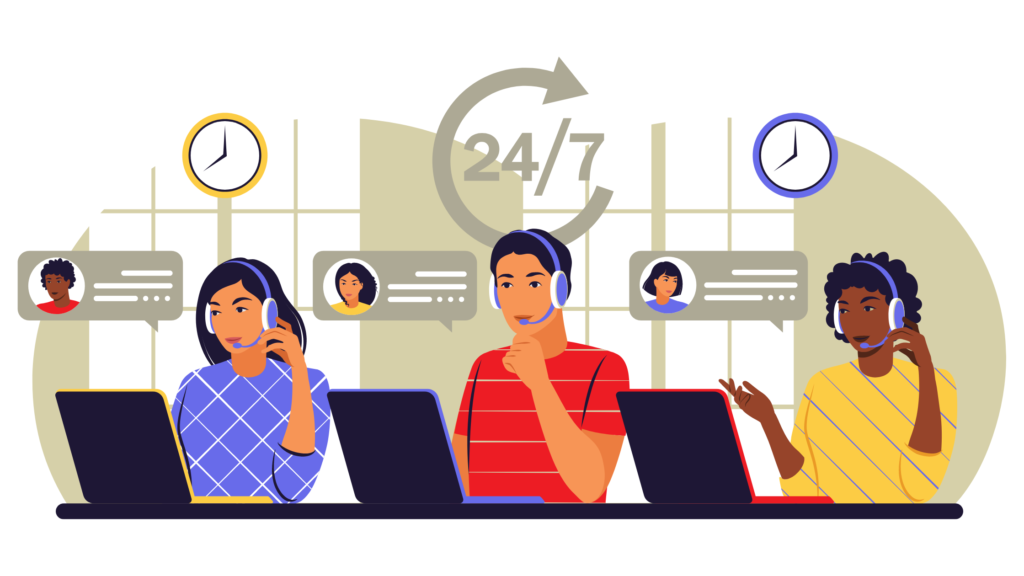Cold callers are individuals who make unsolicited calls to potential customers with the aim of selling a product or service. These calls are termed ‘cold’ because the recipient has not expressed any prior interest in the offer.
Cold calling is a traditional sales technique that, despite the rise of digital marketing, remains a staple in the business world. This method involves contacting individuals without prior notice, often leading to the perception of cold callers as intrusive or unwelcome.
However, it’s a practice rooted in the direct approach of engaging potential customers, aiming to introduce them to products or services they may not have previously considered.
The ‘cold’ aspect of the call refers to the lack of a pre-existing relationship or expressed interest from the recipient, making the call a first point of contact between the salesperson and the potential customer.
Unmasking the mystery of cold calling

The strategy behind cold calling is not merely to sell, but to establish a connection that could lead to a sale, either immediately or in the future.
It requires a high level of skill and perseverance, as cold callers must quickly gain the trust of the person on the other end of the line. They often face rejection and must be adept at handling objections, all while maintaining a professional demeanour.
The effectiveness of cold calling can vary widely, influenced by factors such as the industry, the quality of the contact list, and the skills of the caller.
In many ways, cold calling is a numbers game; success is often a result of making a large volume of calls, as only a small percentage typically result in a positive outcome.
This method is also used to gather market information, test interest in a new product, or simply increase brand awareness. Despite its challenges, cold calling has persisted over the years, adapting to changes in consumer behaviour and regulations, such as the implementation of ‘Do Not Call’ lists which aim to protect consumers from unsolicited calls.
Impact of Technology

With advancements in technology, cold calling has also evolved. Modern salespeople are equipped with more information about their prospects than ever before, thanks to data analytics and social media.
This allows for a more targeted approach, increasing the chances of reaching a receptive audience. Additionally, training programs and sales tools have become more sophisticated, helping to refine the techniques used in cold calling and improve success rates.
While cold calling is often associated with the image of a persistent salesperson, it is important to recognize the skill and resilience required to succeed in such a role.
Cold callers must be knowledgeable about the product or service they are offering, able to answer questions, overcome objections, and convey value convincingly. They must also be respectful of the potential customer’s time and preferences, knowing when to persist and when to gracefully end the call.
The Role of Cold Callers in the Call Center Industry

Cold callers are a crucial part of the call center industry. They are often the first point of contact between a company and potential customers.
Their primary role is to generate leads by reaching out to prospects, providing information about the products or services, and attempting to secure a sale or an appointment for further discussion.
Cold calling is a complex and nuanced practice that continues to play a significant role in the sales process. It’s a testament to the human element in sales, where despite the prevalence of digital communication, a personal touch can make a significant difference.
As the business landscape evolves, so too will the strategies and techniques of cold calling, adapting to meet the needs of both businesses and consumers in an ever-changing market.
Cold Calling for Sales and Marketing
Cold calling, a traditional direct marketing technique, involves contacting potential customers who have not previously expressed interest in the offered products or services. This approach is often associated with sales and marketing efforts where establishing a personal connection is crucial.
Despite the digital age bringing a plethora of online marketing strategies, cold calling has not lost its relevance. It continues to be a valuable asset for businesses seeking to forge new customer relationships or gain rapid market insights.
What makes cold calling critical?
The immediacy of feedback obtained through cold calling is unparalleled, as marketers can instantly gauge the reaction of potential customers and adjust their strategies accordingly.
This real-time interaction also provides a unique opportunity for personal engagement, allowing businesses to address concerns, answer questions, and build rapport in a way that digital communication sometimes fails to achieve.
Moreover, cold calling can be a litmus test for the effectiveness of sales pitches or promotional materials, offering a hands-on method to evaluate their impact. It also serves as a means to humanize a brand in an increasingly automated world, giving a voice and personality to businesses that can resonate with customers.
The technique’s proactive nature ensures that businesses are not passively waiting for customers to discover them but are actively seeking out opportunities to expand their clientele.
Additionally, cold calling can be particularly effective in B2B environments where the decision-making process is complex and often requires several layers of approval. In such scenarios, the ability to directly communicate with key decision-makers can significantly expedite the sales cycle.
While cold calling does come with challenges, such as the potential for rejection or the need for a thick skin, it also offers a level of control over the sales process that other marketing channels do not.
Sales representatives can immediately address objections, clarify information, and pivot their approach based on the conversation’s flow. This dynamic aspect of cold calling makes it a skilful art that, when mastered, can yield substantial rewards in terms of sales and customer insights.
Furthermore, it complements digital marketing efforts by providing a more holistic view of the market and customer preferences, leading to more informed and strategic business decisions.
What are some common objections faced by cold callers?
Cold calling is a challenging task that requires persistence, resilience, and a strategic approach. Cold callers often encounter a range of objections from potential customers. Understanding these objections and knowing how to respond to them effectively is crucial for success in this field.
Here are some of the most common objections faced by cold callers:
1. “I don’t know you.”
This objection arises from a lack of trust or familiarity. Cold callers can overcome this by quickly establishing credibility and showing an understanding of the prospect’s needs.
2. “I’m not interested.”
Often, this objection masks a deeper reason for refusal. It’s important for the caller to engage the prospect in a conversation to uncover the real objection and address it.
3. “I’m too busy.”
Time is valuable, and prospects may not want to spend it on an unsolicited call. Cold callers should respect the prospect’s time and offer to schedule a more convenient time to talk.
4. “I can’t afford it.”
Price objections are common, but they can be countered by demonstrating the value and potential return on investment the product or service offers.
5. “I’m not the right person to talk to.”
In this case, cold callers should ask for a referral to the decision-maker within the organization.
6. “Is this a sales call?”
Prospects may be wary of sales pitches. Cold callers need to focus on how their offering can solve a problem or improve the prospect’s situation.
7. “I need more information.”
This objection indicates interest but also a need for more details. Cold callers should be prepared with information that can help move the conversation forward.
8. “We already have a solution in place.”
To overcome this, cold callers must highlight what makes their offering unique and how it could provide additional value.
9. “Can your product do X, Y, or Z?”
Prospects may have specific needs or concerns. Cold callers should be ready to discuss features and benefits that align with these needs.
10. “We’re not ready to buy.”
Timing can be everything. Cold callers should keep the door open for future opportunities and check back at a later date.
11. “That doesn’t apply to us.”
Understanding the prospect’s business is key. Cold callers should tailor their message to show how their offering is relevant.
12. “I’ll get back to you.”
This may be a polite way of saying no. Cold callers should offer to follow up instead, setting a specific time for the next contact.
13. “I’ve never heard of your company.”
Brand awareness can be an issue. Cold callers should briefly introduce their company and its credentials.
14. “I don’t need this right now.”
Prospects may not see the immediate need for the product or service. Cold callers can highlight the long-term benefits and the cost of inaction.
By preparing for these common objections, cold callers can improve their chances of engaging prospects and ultimately closing sales. It’s about listening, empathizing, and providing value at every step of the call.
Conclusion: Are Cold Callers Still Relevant?

Cold calling, despite the rise of digital marketing strategies, remains a relevant technique in sales and marketing. It is particularly effective in B2B environments where building personal relationships with prospects is crucial.
The immediacy of feedback during a cold call provides valuable insights for sales representatives to refine their approach. However, to remain effective, call centers need to adapt to modern expectations. Integrating technology such as AI and CRM systems can personalize calls and make them more informed.
Additionally, focusing on the quality of interactions rather than the volume of calls can increase the success rate of cold calling campaigns. Training and development of sales representatives are also essential to ensure they are equipped with the necessary skills to engage potential customers effectively. Moreover, an omnichannel approach that combines cold calling with other forms of outreach can create a more cohesive sales strategy.
Lastly, adherence to regulatory compliance is vital to maintain trust and avoid legal pitfalls. These changes can help call centers to continue to leverage cold calling as a valuable asset in their sales and marketing toolkit. In conclusion, cold callers play a significant role in the call center industry and the broader realm of sales and marketing.
While the practice faces challenges and its effectiveness is debated, it continues to be a technique employed by many businesses. As the industry evolves, so too will the strategies and tools used by cold callers to reach potential customers.

